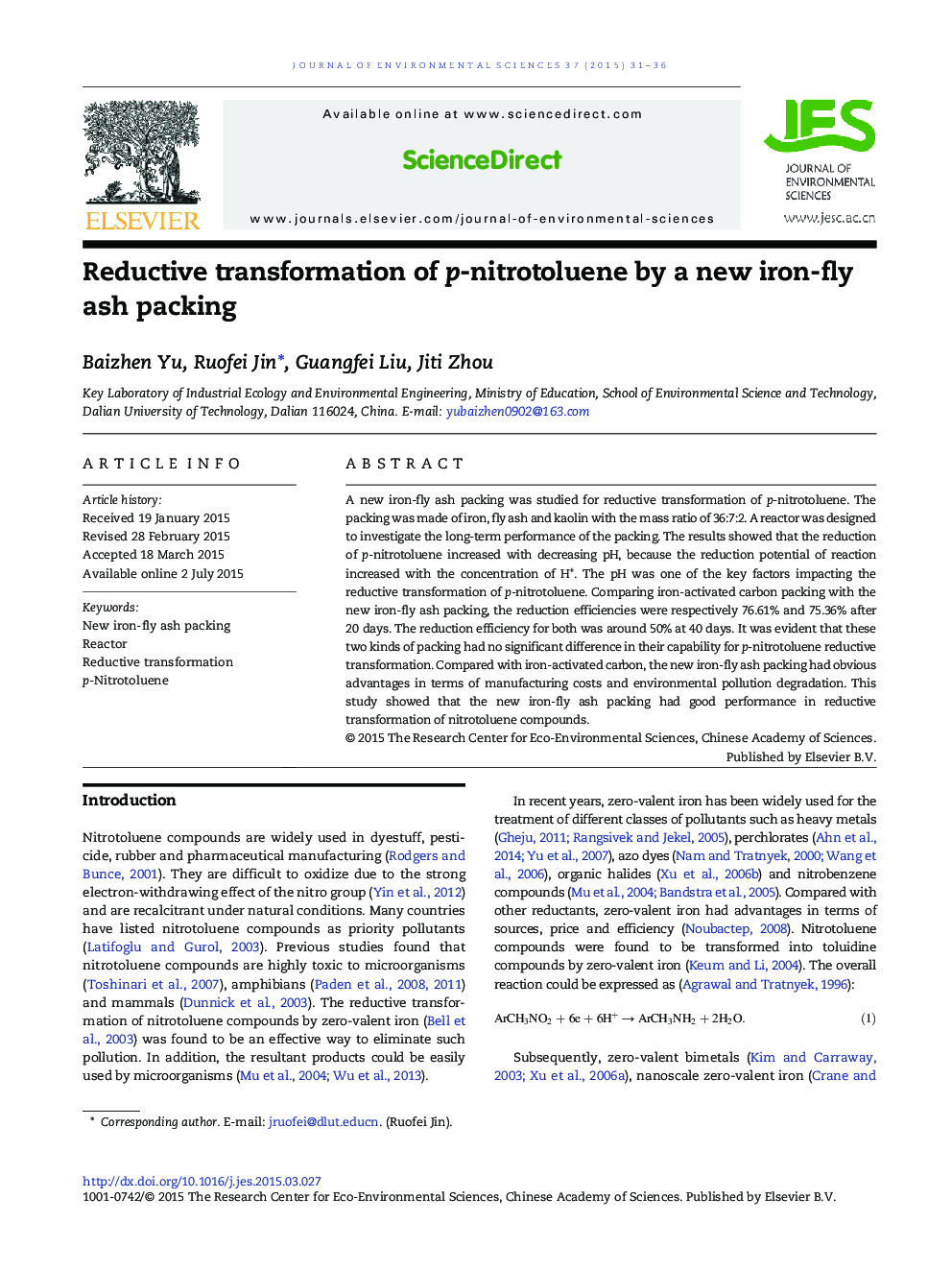| Article ID | Journal | Published Year | Pages | File Type |
|---|---|---|---|---|
| 4453903 | Journal of Environmental Sciences | 2015 | 6 Pages |
A new iron-fly ash packing was studied for reductive transformation of p-nitrotoluene. The packing was made of iron, fly ash and kaolin with the mass ratio of 36:7:2. A reactor was designed to investigate the long-term performance of the packing. The results showed that the reduction of p-nitrotoluene increased with decreasing pH, because the reduction potential of reaction increased with the concentration of H+. The pH was one of the key factors impacting the reductive transformation of p-nitrotoluene. Comparing iron-activated carbon packing with the new iron-fly ash packing, the reduction efficiencies were respectively 76.61% and 75.36% after 20 days. The reduction efficiency for both was around 50% at 40 days. It was evident that these two kinds of packing had no significant difference in their capability for p-nitrotoluene reductive transformation. Compared with iron-activated carbon, the new iron-fly ash packing had obvious advantages in terms of manufacturing costs and environmental pollution degradation. This study showed that the new iron-fly ash packing had good performance in reductive transformation of nitrotoluene compounds.
Graphical abstractIn order to reduce oxidation and agglomeration, a new iron-fly ash packing was made by iron, fly ash and kaolin. The packing was studied for reductive transformation of p-nitrotoluene. A reactor was designed to investigate the long-term performance of the packing. By iron-activated carbon packing and iron-fly ash packing reduction, the reduction efficiency could remain at around 50% in 40 days. Compared with iron-activated carbon, new iron-fly ash packing had obvious advantages in manufacturing costs and environmental pollution degradation.Figure optionsDownload full-size imageDownload as PowerPoint slide
